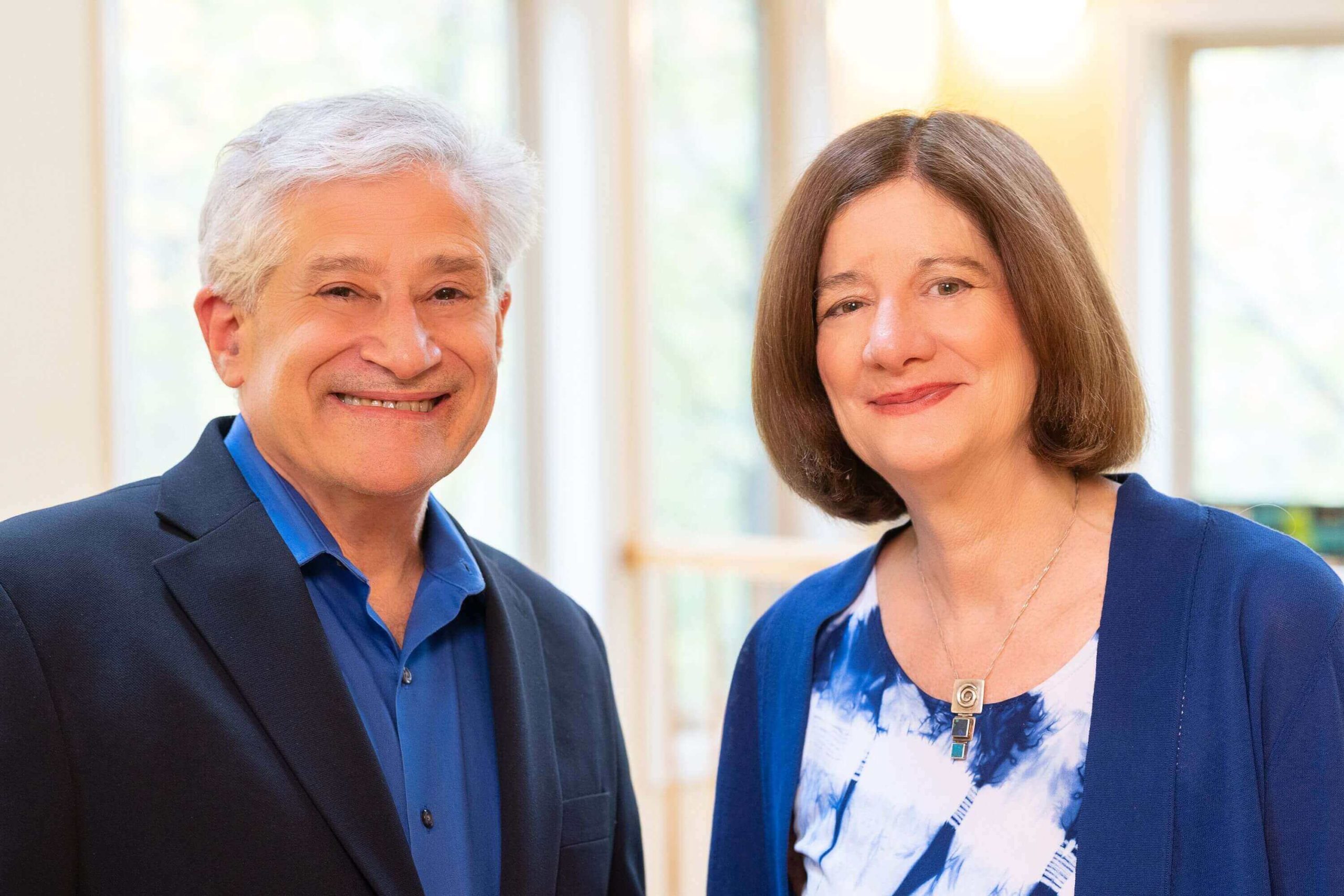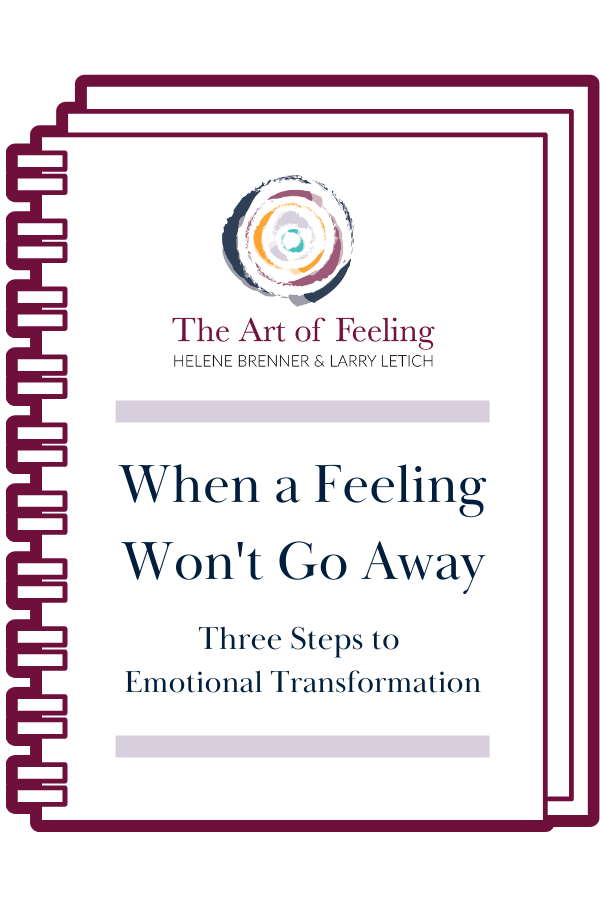“Emotional safety?” exclaimed George, one of our clients. “What are you talking about? No one’s got a knife here. No one’s carrying a gun. No one’s about to fall off a ledge. You can’t walk around worrying about getting your feelings hurt all the time. That’s not the way life is!”
George has a point. Emotional safety does sound rather “soft.” Life isn’t easy, people aren’t always nice, and growth often happens when people go through hardship and adversity. Haven’t we all learned we’ve got to toughen up, have a thicker skin, not let things get to us, in order to get through the hard times without breaking?
All that is true. And yet, despite that – or maybe because of it – emotional safety is still important. In fact, it may be the most important thing, for you, for me, for George’s wife and kids, and for George as well. Without emotional safety, you can’t love well, or even live well. If you don’t feel emotionally safe when you’re with someone, you can’t feel close, and you don’t feel good.
This might sound terribly boring and stifling, like you can never say or do anything that might make someone feel uncomfortable. But that’s not what emotional safety is all about.
So what is emotional safety? It’s actually fairly simple and straightforward. To begin with, it’s a visceral feeling – that is, something you feel in your body. Specifically, it’s the feeling that, in this moment, with this person or these people or in this place, you don’t have to feel scared to be really you.
That’s it. Emotional Safety is vitally important to feeling okay. And the lack of it is at the core of many emotional and societal problems.
The Evolutionary Roots of Emotional Safety
Why is emotional safety so important? It starts with an even more elemental need: physical safety.
For every creature on Earth, from an amoeba on up, the prime directive is safety. Food and procreation are important, but survival tops the list. To survive in an environment full of things that can kill you, you need a very well tuned system for staying safe.
It’s true that many people, particularly young men, are drawn to adventure, risk-taking, and testing the limits of what they can safely do, but for the most part, survival, with its concomitant need to maintain safety, is still our most powerful instinct.
Safety and survival, for all living things, involves a combination of two strategies: avoiding danger as much as possible, and, when you haven’t been able to avoid danger, responding to the danger in the way most likely to keep you alive.
We’re hardwired to avoid danger—to avoid what we fear is going to cause us pain. And if we haven’t been able to avoid that threat, we’re hardwired with four ways to deal with it.
- We can fight as hard as we can against it (especially if we’re trying to protect the ones we love)
- We can try to get away from it
- We can freeze in place to the point of barely breathing (hopefully so we won’t be noticed by the potential attacker)
- If all of those fail, we can “go dead.”
The last is because many predators won’t eat carrion – that is, animals that have already died – and going dead may also reduce the pain of being attacked and killed.
The freeze response – that is, tensing up and barely breathing – is often the first reaction to sensing danger.
We human beings are among the most defenseless and vulnerable creatures on the planet. We have no claws, no sharp teeth, no quills, and we can’t even run very fast. For the first 12 years of our life, and certainly for the first six, we can barely protect and take care of ourselves at all. We evolved one primary way to stay safe, and that is by staying physically close and connected to a group of other human beings.
It’s easy to forget this in our modern world, where we can live as alone as cats and still be safe and get our physical needs met. But this “modern” way of living is not what we’re designed for.
In order to stay connected and work together for such long periods of time – usually, in the past, for entire lifetimes – we needed to develop a way to maintain such a close-knit system and to know when it wasn’t working. That system, the thermostat for keeping the whole thing going and keeping us alive and safe, was and is our emotions. Our emotions – love, anger, fear, sadness and happiness, shame and disgust – are the coins we exchange to hold each other close, or to tell each other when something has gone wrong to break the connection.
Emotional safety for us, then, is tied to physical survival itself. It’s very very real and very very deep.
What Happens When You Feel Emotionally Safe
When you feel emotionally safe with someone, your heart rate and respiration go down and even synchronize with the other person. Perspiration, a sign of stress, is reduced. The muscles in your body relax.You’re likely to express more of your thoughts and feelings, both positive and negative. You can better tolerate physical pain when they’re with you.
Since emotional safety is a feeling, if you have it with someone, you know what it feels like. George feels it most with his “little” brother Tom, two years younger than him. He can go fishing with Tom and barely say a word for hours, but still feel totally at peace. Tom was the one person other than his wife that George turned to when his son was in the hospital, and Tom came through for him.
Emotional safety with at least one person and preferably a few more is what you need to feel okay in your own skin, and to venture out into the new and the unknown.
The Impact of a Lack of Emotional Safety
Lack of emotional safety happens when you feel rejected, abandoned, physically threatened, emotionally attacked, humiliated or held in contempt, for feeling the way you feel, thinking the way you think, or being the way you are. It is to feel unacceptable, unlovable or worse by those around you, those most important to you or those whose survival you depend upon.
Lack of emotional safety can also come from simple lack of physical touch and comfort.
When you don’t feel emotionally safe, you feel emotionally threatened, and it causes the same tensing of the breath and musculature as the freeze response. Feeling emotionally threatened for a period of time without a return back to safety, acceptance and belonging is to live in what essentially feels like a constant state of physical threat.
Most of us know what this feels like as well. It may have happened growing up, or with your partner, or at a job or two..These experiences usually leave scars, sore spots, and emotional triggers – tender places that are inordinately painful whenever they are touched, awakening the original hurt below them. Most of us have an instinctual, reflexive reaction, of which we may be barely aware, to avoid doing or feeling anything that could cause that awful feeling to happen again, even though denying what is truly “us” usually comes at a high personal cost.
This can be hard to accept. Our culture tells us that we should be “strong” and “independent,” that we should be able to “get along” without other people, and that we can rise above the feeling inside us of not belonging, not being okay just as we are. It tells us that it’s “weak” to feel hurt.
But all around us we’re seeing the danger of people, especially our young people, not feeling embraced, protected and wanted just for being who they are. We have made competition our god, we have classified and categorized the people around us, even children, into winners and losers and ignored the basic human need and right to feel accepted and worthwhile by the people around them. Then we wonder why some people break.
When people feel chronically unsafe, their emotions become heightened to where those emotions feel overwhelming, and even frightening, to themselves and others. People who feel chronically cut off from others and unsafe can feel, and sometimes become, unsafe to others.
But when people feel emotionally safe, their emotional system calms down, and they become saner.
We Need to Build More Emotional Safety
Now is a time when building more emotional safety – in ourselves, our families and our communities – is critical, possibly more critical than it’s ever been in our lifetime. For this reason, this article will be the first in a series that will be written over the next two months on how you can increase emotional safety in your life and in the people around you.
For today, let us leave you with this: The first step to building more emotional safety in your life is to realize that you and everyone around you, including men like George, need it more than you, or they, think. And emotional safety comes when we treat each other with care.
It doesn’t mean never expressing anger, or never (for many of us, though not all) playfully teasing. It’s about creating homes and communities where our true human experiences, in all their beauty, joy and tragedy are freely spoken and lovingly welcomed, honored, held and embraced. It’s about respecting the vulnerability of your own heart, your partner’s heart, and indeed, every human heart.
For the heart, as much as it is resilient, is a very tender organ.


 We’re Helene Brenner and Larry Letich. Helene is a licensed psychologist in private practice for more than 30 years. Larry is an individual and couples therapist. Besides being therapists, we’re co-authors and partners in life and love for more than four decades.
We’re Helene Brenner and Larry Letich. Helene is a licensed psychologist in private practice for more than 30 years. Larry is an individual and couples therapist. Besides being therapists, we’re co-authors and partners in life and love for more than four decades. 

Wow. I am so appreciative that you separated emotional from physical – because although they may run on similar physical paths, emotions must be treated for what they are and not bundled under some drug treatment.
So well said… Tk you.
Powerful ending: For the heart, as much as it is resilient, is a very tender organ.